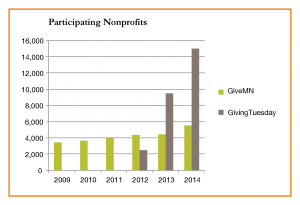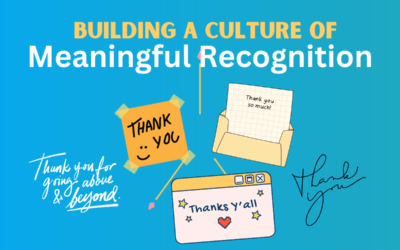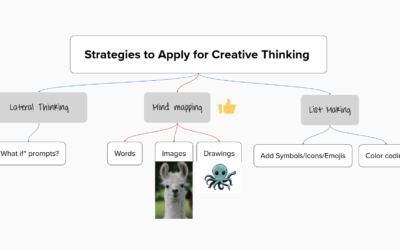 #GivingTuesday is nearly doubling each year. Give to the Max Day continues to collect more donations year over year. New communities are adding new giving days each year as these efforts and other successes continue to introduce charities to new donors using social tools and collaborative marketing. Specifics will vary on each giving day, such as the use of leaderboards, matching gifts, and more – but the common element is a cooperative communications around philanthropy.
#GivingTuesday is nearly doubling each year. Give to the Max Day continues to collect more donations year over year. New communities are adding new giving days each year as these efforts and other successes continue to introduce charities to new donors using social tools and collaborative marketing. Specifics will vary on each giving day, such as the use of leaderboards, matching gifts, and more – but the common element is a cooperative communications around philanthropy.
Many mid-sized (and smaller) charities are just starting to make substantial planning efforts to capitalize on these tools. Others have put only minimal effort into these campaigns because of a perceived lack of benefit, a fear of fatiguing donors before traditional year-end campaigns, or a simple lack of understanding of just how to execute a giving day strategy. Add to these potential factors the mix of platforms (donation sites with giving day tools) and it is even less surprising it has taken a few years for some charities to opt into these days.
The obvious increase in uptake – especially with #GivingTuesday – forces a question of competition for resources in the increasing online donations market. Charities who sit out these larger and larger giving days may find donors increasingly tapped-out by the time they make a request for a donation on their own schedule. A few strategic decisions will guide a nonprofit’s tactics for giving days:
- Which days? Give to the Max and #GivingTuesday are established giving days, so there is already publicity machines and support available to take advantage of these. These two days occur less than one month apart, which in turn is less than one month from the end of the year. Charities may not want to do three major pushes in 6 weeks. It may, however, be helpful to do strategic targeting for each day, segmenting markets rather than saturating them. Push your small donors on Give to the Max Day for social sharing, for example, but don’t push larger donors until the end of the year appeal. This is further complicated by the idea of issue-specific giving days, associated with awareness weeks or months. Charities in groups like these may be more interested in collaborative giving days that use these calendar events as springboards.
- Which platforms? Some giving days, such as Give to the Max Day, utilize tools such as leaderboards and matching gifts to encourage participation. In order to take advantage of these tools, the nonprofit is locked in to a giving platform which may not be their usual choice of how they accept donations. Giving days may move to more federated platforms (see the link below) in the future, but for now, charities must make a call about what platform works for them and the costs and benefits of other choices.
- What growth? Single-platform choices may be limited in the growth curve, but there are lots of ways to measure donor growth. Raw numbers of donors? Lead generation? Total dollars raised? The answer won’t be the same for every nonprofit.
Next in Nonprofits’ white paper, Giving Days: Collaboration, Federation, or Unification?, provides more food for thought sharing information with giving days, collecting federated (collaborative but separate) data, and more. Social giving is still maturing, and early adopters will have more advantage in collecting future gifts in these areas.


